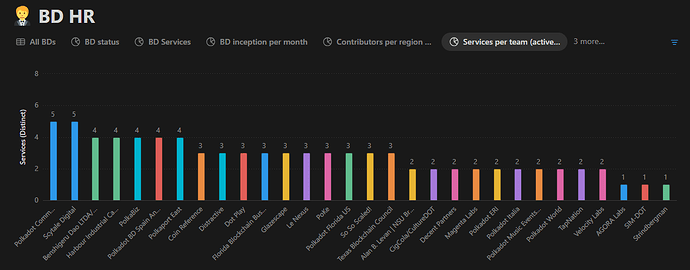 This proposal in its current form will HALT OpenGov!
This proposal in its current form will HALT OpenGov!
Support:
The mission to raise the barrier for OpenGov ref submissions is LONG overdue!
This is well achieved by the suggestions to:
 Increase the Submission Deposit
Increase the Submission Deposit
 Increase Decision Deposits
Increase Decision Deposits
 Decrease Max Deciding refs per Track
Decrease Max Deciding refs per Track
 Lowering friction for Referendum Canceller
Lowering friction for Referendum Canceller
 Increase the minimum Support Turn-out
Increase the minimum Support Turn-out
Dissent:
 Increase the minimum Support Turn-out
Increase the minimum Support Turn-out
I suggest this parameter will have no impact on reducing ref submissions (why would it?) and may even DECREASE voter participation.
Why?
Because these thresholds proposed are FAR OUTSIDE Support Turn-out today!
Under the proposed changes, the majority of refs (even those with 100% AYE) will fail - Grinding OpenGov to a halt.
Problems with grinding OpenGov to a Halt:
- Voter apathy - why vote if nothing gets passed?
- Proposer apathy - why propose (even with support) if failure is certain?
- Maintenance Neglect - Operational spends suspended
- Centralization - Refs will only get passed with Mega holder support or expedited bounty structures installed by the same.
The Reality of High Support Turn-out
Here’s how the past 20 Approved refs on each track would have faired under the proposed support thresholds:
Treasurer Track - Proposed 1.5% turnout
Sheet
We can see that while 85% of refs achieved >75% support only 20% would pass.
Big Spender Track - Proposed 1% turnout
Sheet
We can see that while 80% of refs achieved >75% support only 15% would pass.
Medium Spender Track - Proposed 1% turnout
Sheet
We can see that while 40% of refs achieved >75% support 0% would pass.
Small Spender Track - Proposed 0.5% turnout
Sheet
We can see that while 70% of refs achieved >75% support only 55% would pass.
How Support Turn-out Thresholds COULD help:
We can see the problem of low-quality proposals slipping through truly lies on the Medium Spender track!
We observe that a whopping 60% of refs that passed had <75% AYE!
Interestingly 75% of refs below 75% AYE have <0.5% Support Turn-out!
This suggests refs without a clear support of AYE or NAY may have many non-voters, allowing narrow passes with low Support Turn-out.
A Different Solution with Better Outcomes:
We see that for each of the tracks we have the following Support Turn-out for the last 20 refs:
Treasurer - 0.98%
Big Spender - 0.66%
Med Spender - 0.45%
Small Spender - 0.55%
So we could attempt to stimulate activity with:
Treasurer - 1%
Big Spender - 0.75%
Med Spender - 0.6%
Small Spender - 0.6%
We should then continue to raise Support Turn-out thresholds as participation increases.
In this way we solve the low-quality slip-throughs on Medium Spender without grinding the whole thing to a halt!
Credit to @anaelleltd for flagging some of these thoughts in her comment above.




